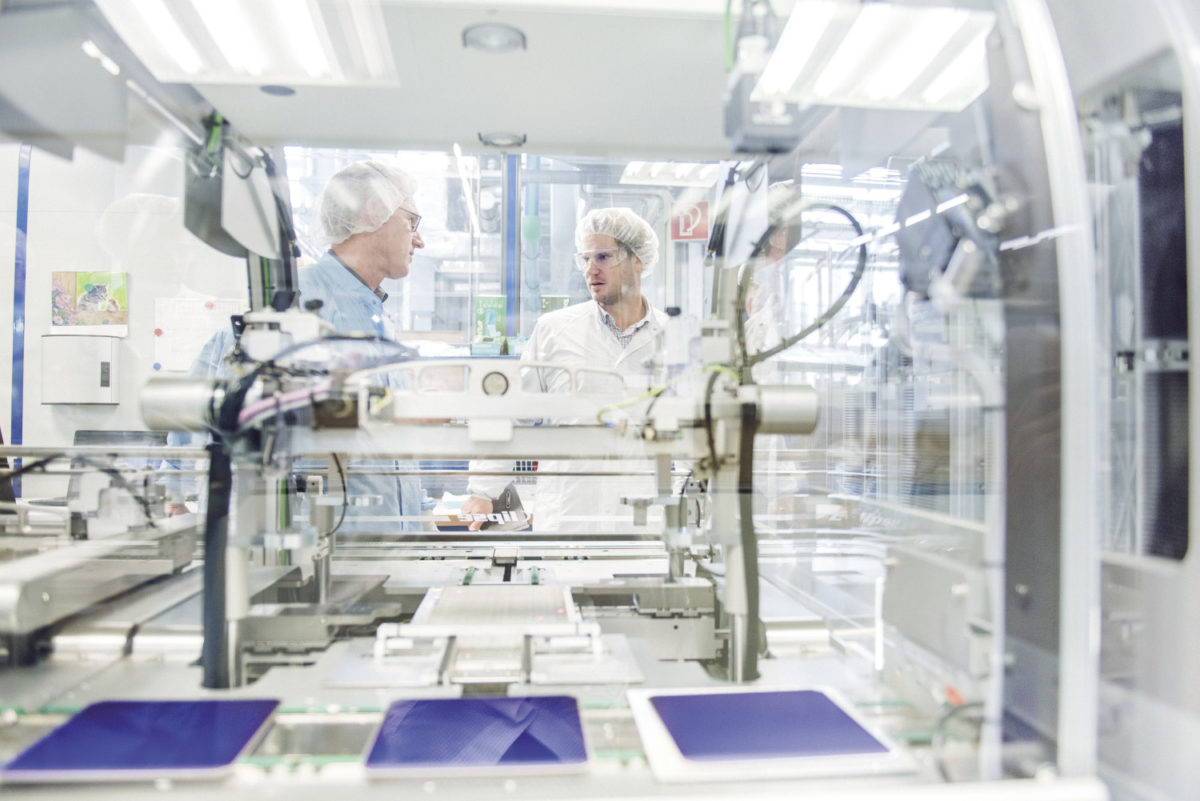Researchers from the Leibniz University Hannover, in Lower Saxony Germany have examined the impact of a sorbitol admixture to hole-conduction polymer PEDOT:PSS [poly(3,4-ethylenedioxythiophene):poly(styrene sulfonate)] on polymer/crystalline silicon heterojunction (HJT) solar cells.
In so doing, the team deposited a PEDOT:PSS layer as a hole-collecting contact to the rear of a cell while the front was treated ‘conventionally,’ through phosphorous diffusion.
According to the researchers, the admixture of the infrared-transparent sorbitol improved the short-circuit density of the cell due to a reduction in infrared parasitic absorption. The researchers also observed the passivation quality of PEDOT:PSS was improved, together with the open-circuit voltage.
“The series resistance is not influenced by the admixture of sorbitol up to 4.0 wt.% sorbitol admixture in the PEDOT:PSS dispersion, but shows a pronounced increase for larger sorbitol contents,” the team wrote. The researchers concluded optimal sorbitol content sits at 4.0 wt%, allowing for 20.4% conversion efficiency at one-sun reference irradiation. That marked a 1.1% increase on reference cells not treated with sorbitol.
Rear passivation optimal
Sorbitol is reportedly already used as a conductive additive in PEDOT:PSS but its effects had not been studied at a device level before. The researchers found differences depending on whether the sorbitol was applied to the front or the rear of the cell, and concluded rear passivation provided the best results.
Popular content
The scientists assessed passivation quality by fabricating 300µm thick (100)-oriented p-type float-zone silicon (FZ-Si) wafers with a resistivity of 200 Ωcm. One side of the wafer was then treated using plasma enhanced chemical vapor deposition. The improved short circuit current density and open circuit voltage improve crystalline HJT cells on multiple levels when applied through PEDOT:PSS dispersion.
With a sorbitol concentration of 4.0 wt.% in the precursor dispersion, the team measured a median J0.PEDOT value of 64 fA/cm2. Compared to a sorbitol concentration of 7.7 wt.%, with a median J0:PEDOT of only 38 fA/cm2 , the team concluded the recombination at the PEDOT:PSS/c-Si interface was more than halved by adding 7.7 wt.% of sorbitol to the precursor solution. At even higher sorbitol concentrations of 11 wt.% and 14 wt.%, the J0.PEDOT value rose significantly.
The study saw 42 cells made with the new technology. Throughout the findings, the researchers stated they believe they can further improve the cell by changing more parameters, such as by using better bulk material.
This article has been amended on 08.07.19 to stand corrected on the name of the research institute that has produced these resutls.
This content is protected by copyright and may not be reused. If you want to cooperate with us and would like to reuse some of our content, please contact: editors@pv-magazine.com.



By submitting this form you agree to pv magazine using your data for the purposes of publishing your comment.
Your personal data will only be disclosed or otherwise transmitted to third parties for the purposes of spam filtering or if this is necessary for technical maintenance of the website. Any other transfer to third parties will not take place unless this is justified on the basis of applicable data protection regulations or if pv magazine is legally obliged to do so.
You may revoke this consent at any time with effect for the future, in which case your personal data will be deleted immediately. Otherwise, your data will be deleted if pv magazine has processed your request or the purpose of data storage is fulfilled.
Further information on data privacy can be found in our Data Protection Policy.